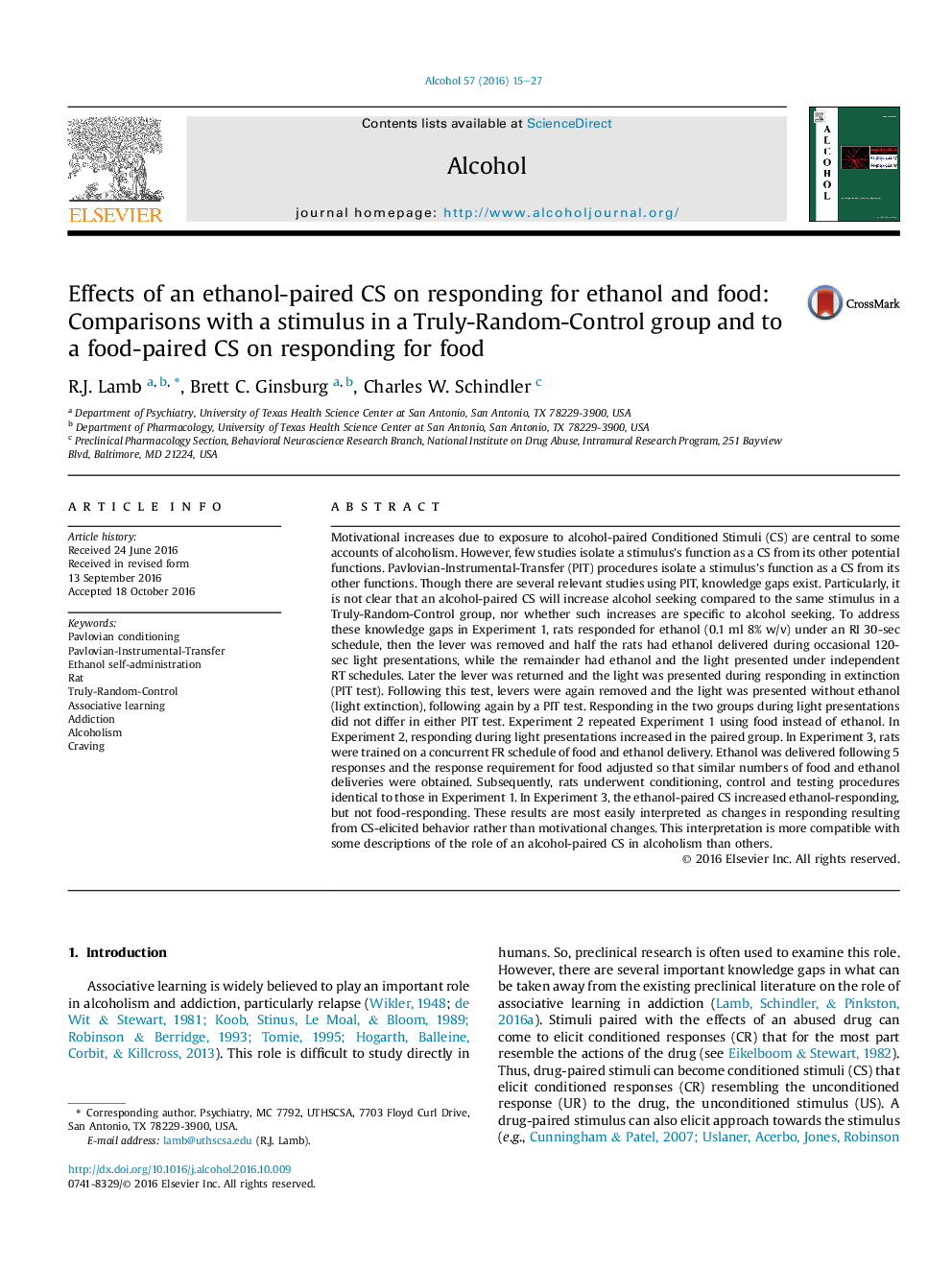| Article ID | Journal | Published Year | Pages | File Type |
|---|---|---|---|---|
| 5119788 | Alcohol | 2016 | 13 Pages |
â¢In rats responding only for ethanol, an ethanol-paired CS did not increase responding.â¢In rats responding only for food, a food-paired CS increased responding.â¢In rats responding for both, an ethanol-paired CS increased responding for ethanol, but not food.â¢The dependency of CS effects upon experimental context is most consistent with these effects resulting from the elicited CR.
Motivational increases due to exposure to alcohol-paired Conditioned Stimuli (CS) are central to some accounts of alcoholism. However, few studies isolate a stimulus's function as a CS from its other potential functions. Pavlovian-Instrumental-Transfer (PIT) procedures isolate a stimulus's function as a CS from its other functions. Though there are several relevant studies using PIT, knowledge gaps exist. Particularly, it is not clear that an alcohol-paired CS will increase alcohol seeking compared to the same stimulus in a Truly-Random-Control group, nor whether such increases are specific to alcohol seeking. To address these knowledge gaps in Experiment 1, rats responded for ethanol (0.1Â ml 8% w/v) under an RI 30-sec schedule, then the lever was removed and half the rats had ethanol delivered during occasional 120-sec light presentations, while the remainder had ethanol and the light presented under independent RT schedules. Later the lever was returned and the light was presented during responding in extinction (PIT test). Following this test, levers were again removed and the light was presented without ethanol (light extinction), following again by a PIT test. Responding in the two groups during light presentations did not differ in either PIT test. Experiment 2 repeated Experiment 1 using food instead of ethanol. In Experiment 2, responding during light presentations increased in the paired group. In Experiment 3, rats were trained on a concurrent FR schedule of food and ethanol delivery. Ethanol was delivered following 5 responses and the response requirement for food adjusted so that similar numbers of food and ethanol deliveries were obtained. Subsequently, rats underwent conditioning, control and testing procedures identical to those in Experiment 1. In Experiment 3, the ethanol-paired CS increased ethanol-responding, but not food-responding. These results are most easily interpreted as changes in responding resulting from CS-elicited behavior rather than motivational changes. This interpretation is more compatible with some descriptions of the role of an alcohol-paired CS in alcoholism than others.
Graphical abstractDownload high-res image (55KB)Download full-size image
